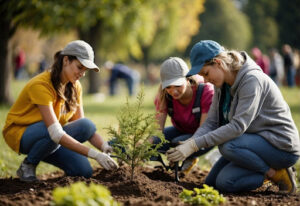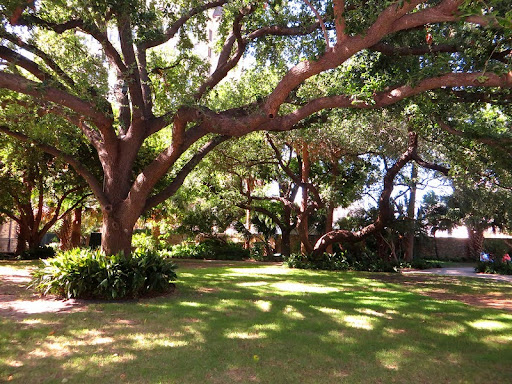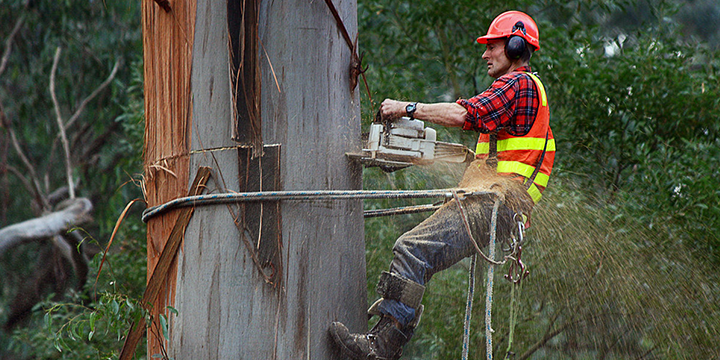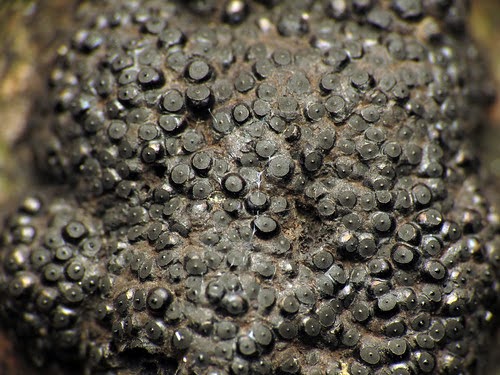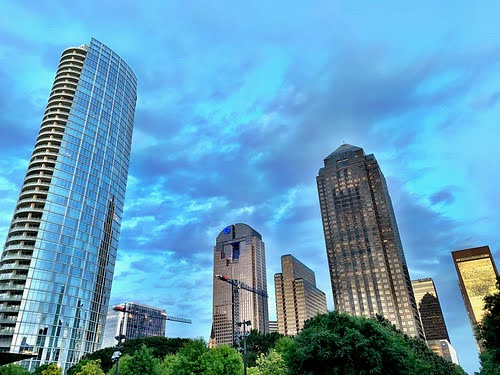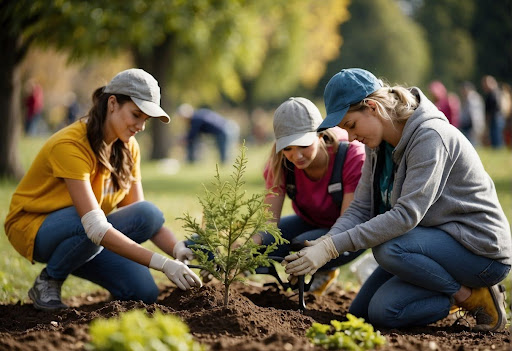
Tree Restoration Arlington: Strategies for Revitalizing Urban Forests
Date March 21, 2024
Arlington is actively addressing the decline of its tree population due to disease, pests, and environmental stress through various tree restoration initiatives. These programs aim to rejuvenate the urban forest, ensuring that trees continue to provide environmental, social, and economic benefits to the community. Urban forestry experts in Arlington collaborate with local organizations and government entities to implement modern arboricultural methods tailored to the city’s unique ecosystem. TreeNewal is proud to also work to assure that the urban forest is maintained in Arlington,TX.
The process of tree restoration in Arlington involves a blend of scientific techniques and community participation. Specialists conduct thorough assessments of affected trees, determining the most effective treatments for diseases and pest infestations. Initiatives also focus on selecting and planting native tree species that are more resilient to local environmental challenges. These efforts are supplemented by educational programs designed to engage residents in the care and maintenance of trees, thereby fostering a sense of stewardship amongst the population.
State of Arlington’s Forests
Arlington’s forests are combating diverse challenges including disease, pest infestations, and environmental stress, each taking a significant toll on tree health and survival.
Impact of Disease on Trees
In Arlington, tree diseases have resulted in widespread decline of certain species. Oak Wilt, caused by the fungus Bretziella fagacearum, has led to the death of numerous oak trees, particularly those in the red oak family, disrupting local ecosystems. Ash Yellows, affecting the ash tree population, presents with symptoms including chlorosis and premature fall coloration, hindering tree vigor and survival rates.
Pest Infestations Overview
Pests such as the Emerald Ash Borer (EAB) have infested Arlington, devastating ash trees throughout the region. EAB larvae burrow into the ash tree’s bark, impeding the trees’ ability to transport water and nutrients. The Gypsy Moth, another destructive pest, has been defoliating large expanses of foliage, which weakens the trees and makes them more susceptible to other stress factors.
Environmental Stress Effects
Environmental stressors like extreme weather events have worsened the conditions for Arlington’s trees. Extended periods of drought stress the trees, reducing their ability to absorb nutrients and fight off pests and diseases. Conversely, excessive rainfall and flooding can lead to root suffocation and the spread of root rot diseases. These climate-related stresses exacerbate the impact of diseases and pests, underscoring the need for effective tree restoration efforts.
Tree Restoration Techniques
Tree restoration in Arlington employs targeted approaches to combat challenges such as disease, pests, and climate stress, ensuring the vitality and sustainability of urban and suburban forests.
Disease Management Practices
Arlington’s arborists adopt proactive disease management practices to protect tree health. They use regular monitoring to catch diseases early, followed by precisely applied treatments, like fungicides or antibacterial agents, to affected trees. Soil management, including nutrient adjustments and pH corrections, is also crucial for disease prevention.
Pest Control Initiatives
Pest control in Arlington involves the implementation of Integrated Pest Management (IPM) strategies. This includes:
- Monitoring pest populations
- Installing pheromone traps to disrupt mating cycles
- Applying targeted insecticides only when necessary
- Encouraging the presence of natural predators
These initiatives aim to reduce pest-related damage while minimizing environmental impact.
Climate Adaptation Strategies
Arlington is mitigating environmental stress on trees through adaptive measures:
- Selecting drought-tolerant tree species for new plantings
- Utilizing water-efficient irrigation systems to maintain tree hydration
- Employing structural soil techniques to enhance root growth and water retention
These strategies together contribute to the resilience of Arlington’s urban tree canopy against climate change.
Measuring Restoration Success
Evaluating the success of tree restoration efforts in Arlington involves assessing various ecological parameters. These measures capture the health and progress of the restoration activities.
Ecological Health Indicators
To gauge ecological health, restoration projects in Arlington analyze soil quality, including pH levels and nutrient content. They also monitor the presence of native flora and fauna, indicating the broader ecosystem’s response to tree restoration.
Soil Quality:
- pH Levels: 5.5 – 7.5 (ideal for most trees)
- Nutrient Content: High in nitrogen, phosphorus, and potassium
Presence of Native Species: Detecting an increase in native undergrowth and animal species signifies a thriving habitat.
Tree Survival and Growth Rates
Long-term tree survival and annual growth rates provide insight into the vitality of restored forests. Arlington’s tree restoration measures these metrics regularly.
Survival Rates:
- Young Trees (1-3 years): 70-90%
- Mature Trees (4+ years): 90-95%
Growth Rates: Documented through annual increase in:
- Trunk Diameter
- Crown Size
- Height
Biodiversity Improvements
Biodiversity is critical for a resilient ecosystem. Arlington restoration initiatives aim to increase species variety and genetic diversity.
Species Variety: Tracking the number of tree species pre- and post-restoration.
- Pre-restoration: 15 species
- Post-restoration: 25+ species
Genetic Diversity: Ensuring a mix of genotypes within tree populations to enhance adaptability and disease resistance.
In Arlington, the battle to restore the tree population is gaining momentum, addressing challenges like disease, pests, and environmental stressors head-on. Through a combination of scientific expertise and community involvement, Arlington is spearheading tree restoration initiatives aimed at revitalizing the urban forest and reinforcing the multitude of benefits trees bring to our environment and society. These endeavors encompass a wide range of activities, from conducting in-depth health assessments of trees to implementing modern arboricultural methods, all tailored to the city’s unique ecosystem. The ultimate goal is to ensure that Arlington’s trees continue to thrive, providing crucial environmental, social, and economic advantages to the community.
TreeNewal, serving clients in the Dallas and Fort Worth Metroplex, including Arlington, since 2017, is at the forefront of these restoration efforts. With a comprehensive understanding of the local ecosystem, TreeNewal employs targeted strategies for disease management, pest control, and climate adaptation to support Arlington’s tree restoration. Their work not only involves the technical aspects of tree care but also engages the community through educational programs, fostering a deeper connection between residents and their urban forest.
For those in Arlington passionate about preserving and enhancing the local tree canopy, TreeNewal offers an opportunity to make a tangible impact. Whether you’re concerned about the effects of pests like the Emerald Ash Borer or environmental stresses on our trees, TreeNewal has the expertise and experience to address these challenges effectively. By partnering with TreeNewal, you can contribute to making Arlington a greener, more sustainable place.
Don’t let the challenges facing Arlington’s trees go unaddressed. Join TreeNewal in their mission to restore and protect our urban forest. With their proven track record in tree restoration across the Dallas and Fort Worth Metroplex, TreeNewal is your ideal partner in ensuring the health and longevity of Arlington’s trees. Reach out today and take a step towards a greener, more vibrant Arlington.
